Monkeypox virus spreads from cell-to-cell and leads to neuronal death in human neural organoids
- PMID: 40588500
- PMCID: PMC12209443
- DOI: 10.1038/s41467-025-61134-0
Monkeypox virus spreads from cell-to-cell and leads to neuronal death in human neural organoids
Abstract
In 2022-23, the world witnessed the largest recorded outbreak of monkeypox virus (MPXV). Neurological manifestations were reported alongside the detection of MPXV DNA and MPXV-specific antibodies in the cerebrospinal fluid of patients. Here, we analyze the susceptibility of neural tissue to MPXV using human neural organoids (hNOs) exposed to a clade IIb isolate. We report susceptibility of several cell types to the virus, including neural progenitor cells and neurons. The virus efficiently replicates in hNOs, as indicated by the exponential increase of infectious viral titers and establishment of viral factories. Our findings reveal focal enrichment of viral antigen alongside accumulation of cell-associated infectious virus, suggesting viral cell-to-cell spread. Using an mNeonGreen-expressing recombinant MPXV, we confirm cell-associated virus transmission. We furthermore show the formation of beads in infected neurites, a phenomenon associated with neurodegenerative disorders. Bead appearance precedes neurite-initiated cell death, as confirmed through live-cell imaging. Accordingly, hNO-transcriptome analysis reveals alterations in cellular homeostasis and upregulation of neurodegeneration-associated transcripts, despite scarcity of inflammatory and antiviral responses. Notably, tecovirimat treatment of MPXV-infected hNOs significantly reduces infectious virus loads. Our findings suggest that viral disruption of neuritic transport drives neuronal degeneration, potentially contributing to MPXV neuropathology and revealing targets for therapeutic intervention.
© 2025. The Author(s).
Conflict of interest statement
Competing interests: The authors declare no competing interests.
Figures

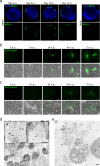
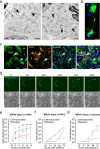
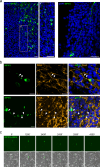
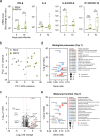
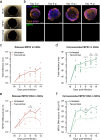
References
-
- World Health Organization. 2022 Mpox (Monkeypox) Outbreak: Global Trends. Vol. 2023 (World Health Organization, 2022).
-
- World Health Organization. Monkeypox - United Kingdom of Great Britain and Northern Ireland. Vol. 2023 (World Health Organization, 2022).
-
- Thornhill, J. P. et al. Monkeypox Virus infection in humans across 16 countries - April-June 2022. N. Engl. J. Med.387, 679–691 (2022). - PubMed
MeSH terms
Grants and funding
LinkOut - more resources
Full Text Sources
Medical

